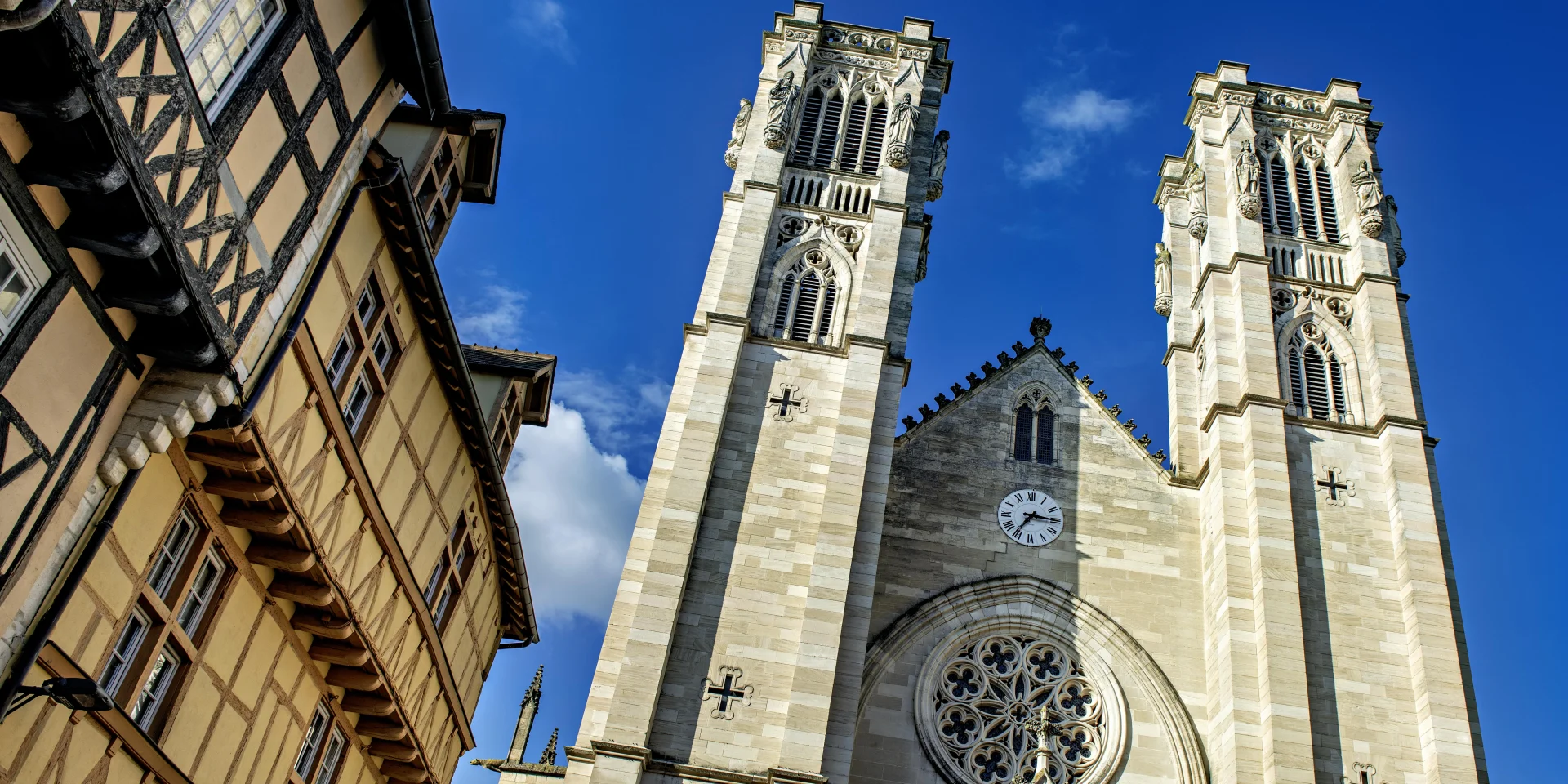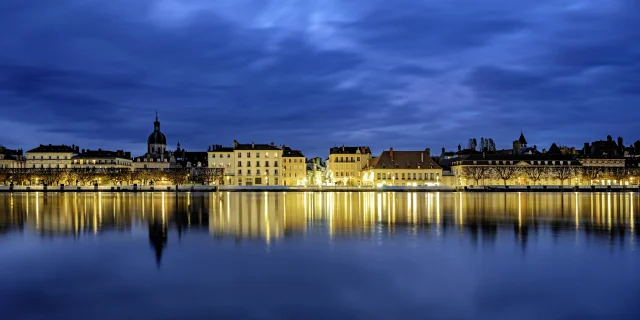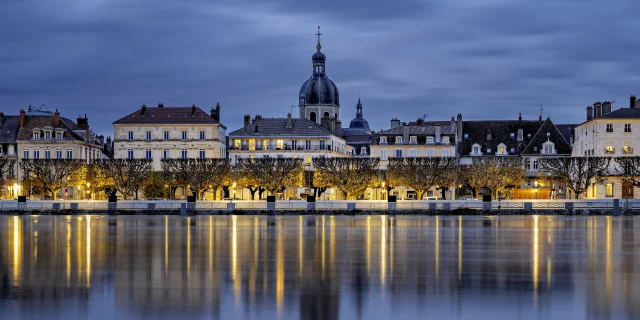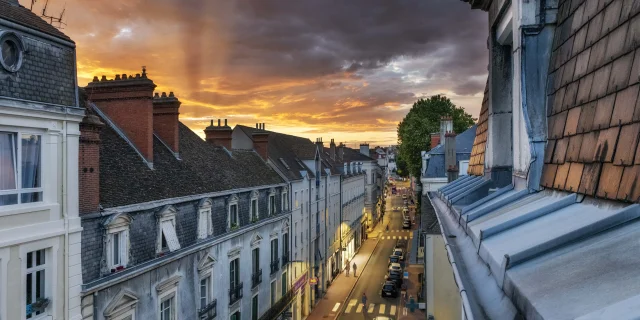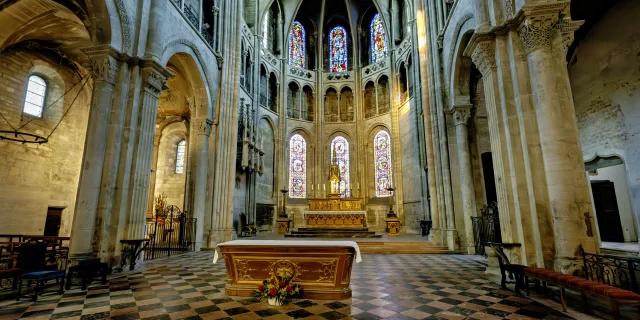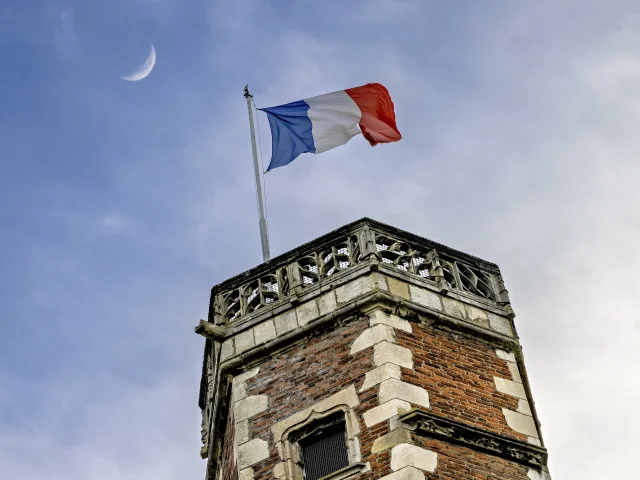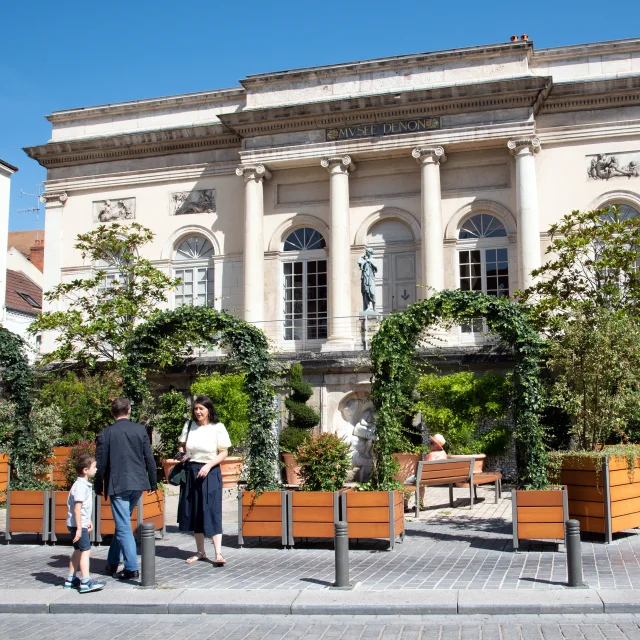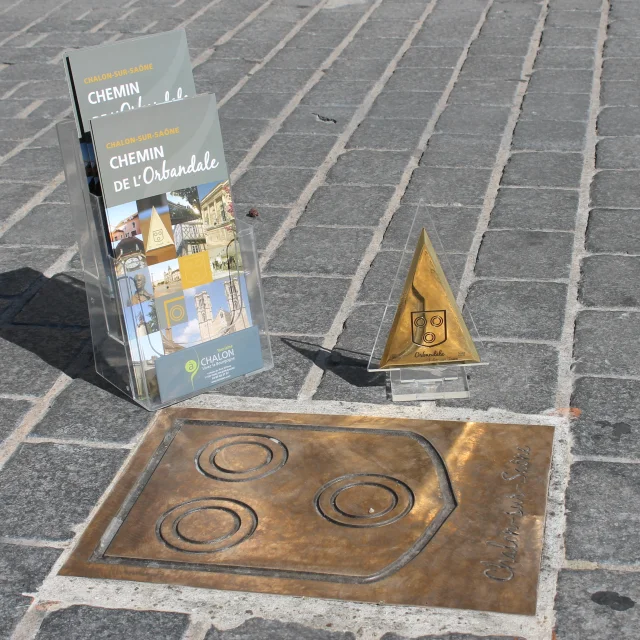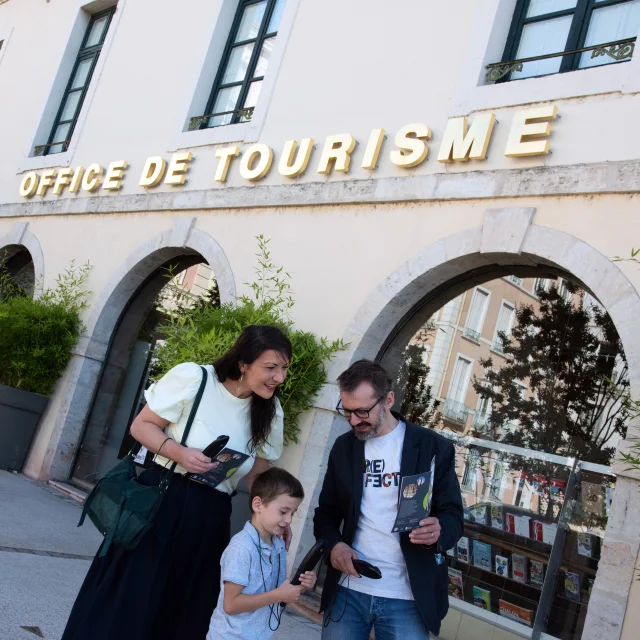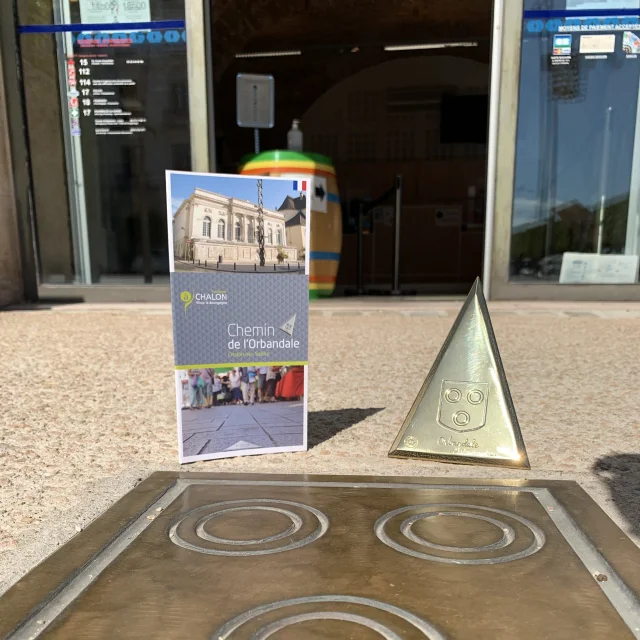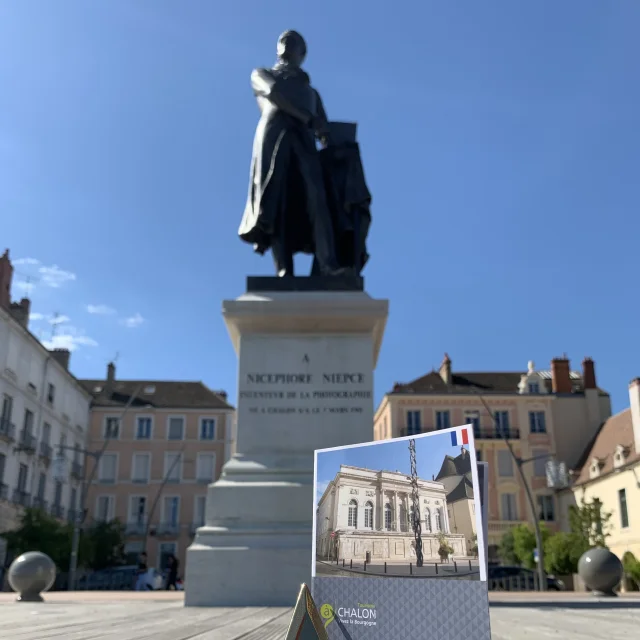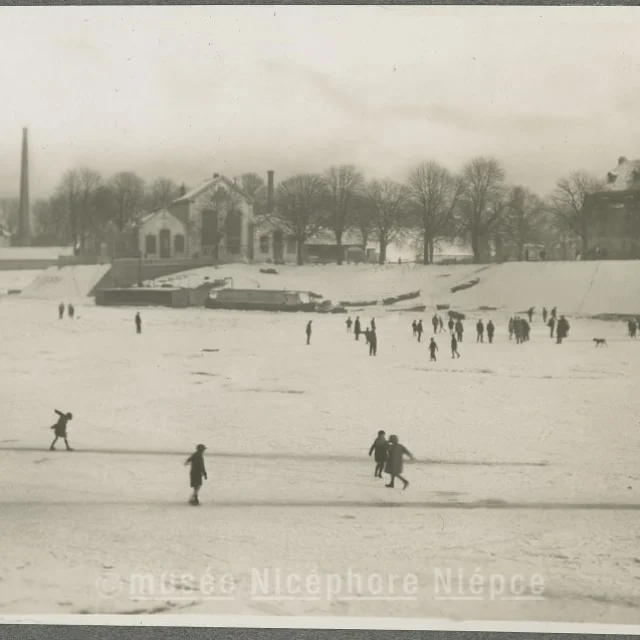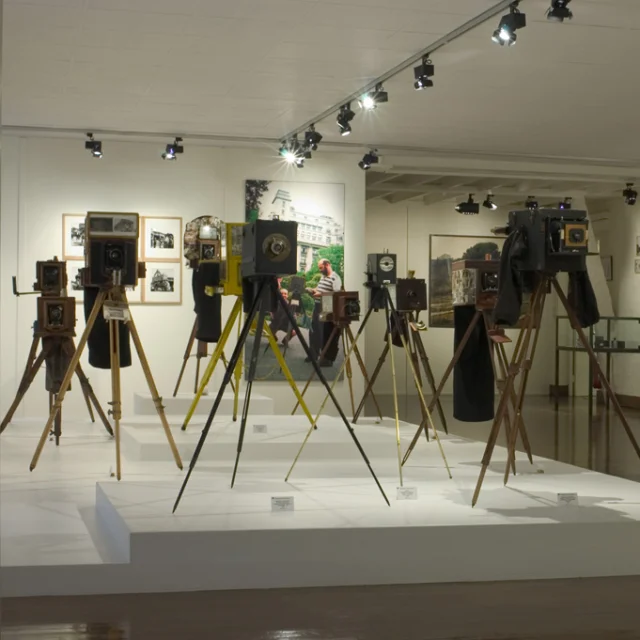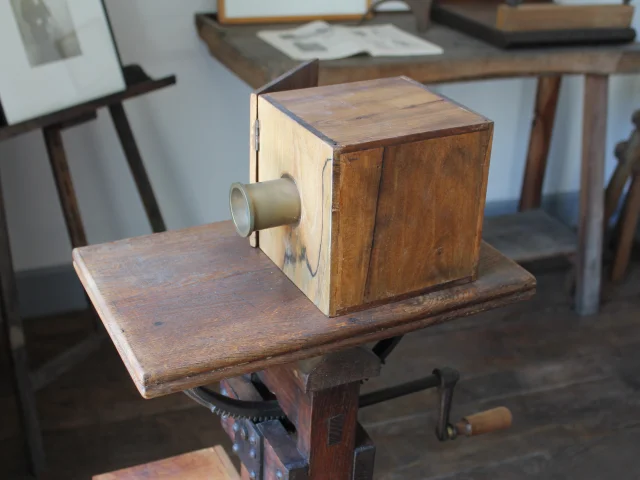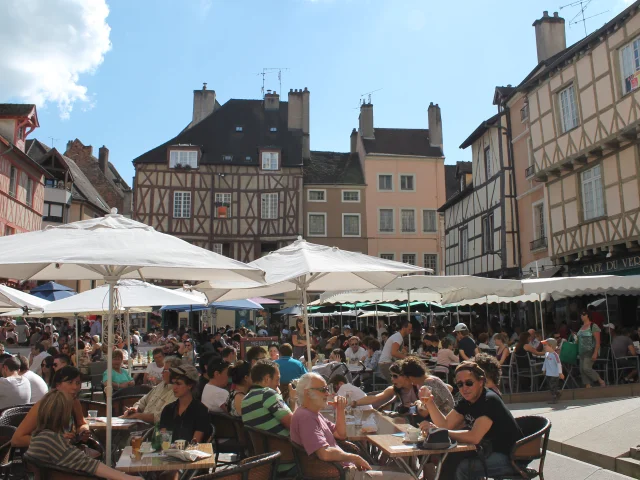Religious heritage
Although Chalon’s Christian heritage suffered greatly during the French Revolution, it remains omnipresent: the must-see Saint-Vincent cathedral, the imposing Saint-Pierre church with its architecture typical of the Catholic Counter-Reformation, the neo-Gothic Saint-Cosme church, not forgetting the Citadelle chapel and its statue of the Virgin Mary, erected in thanksgiving to the Blessed Virgin for having protected the town from the Prussians in 1870, or the Chapelle de la Colombière, designed by Auguste Perret…. And it’s often enough to look up in the streets of Chalon to spot a Virgin nestled in an old building…
